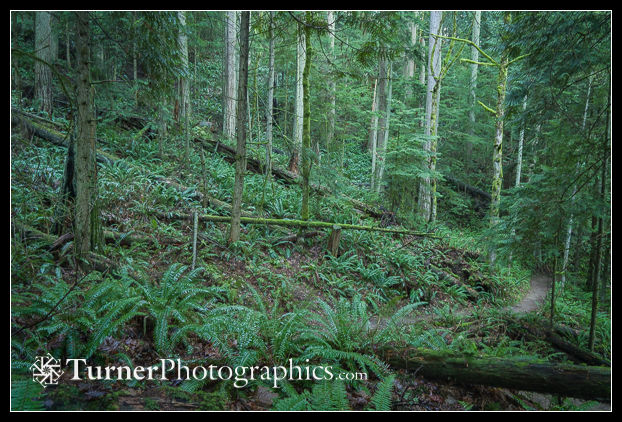Winter’s Green

Brian and I hiked up the Pine and Cedar Lakes trail to Cedar Lake on Sunday during a break in our current rainy spell. It’s a steep climb, starting right from the trailhead on Old Samish Road and quickly gaining 1400 feet with 1000 of that in the first mile.
![Trail among Douglas-firs, Western Hemlocks & Sword Ferns [Pseudotsuga menziesii; Tsuga heterophylla; Polystichum munitum]. Pine & Cedar Lakes Trail, Bellingham, WA. © Mark Turner [2000036] Trail through conifers](/wp-content/uploads/2020/01/Turner_2000036.jpg)
As we were hiking uphill carrying just a light day pack I was feeling out of shape and breathing heavily. Eventually I started peeking at my altimeter watch and found that we were climbing at anywhere from 33 to 42 vertical feet per minute. To put that in perspective, my lifetime maximum vertical gain on foot is 45 ft/min. No wonder we were breathing hard!
As the trail moderated a bit in the upper reaches we were able to more comfortably look around. The thing that struck us was how green our local woods can look in the middle of winter. The forest along the trail is mostly mixed second-growth conifers — the usual Douglas-fir, western hemlock, and western redcedars with a dense carpet of sword ferns in many places. Piggyback plant, fringecup, and round-leaf violet foliage glowed green among the thick duff (and mud) along the trail.
![Moss foliage & sporophytes. Pine & Cedar Lakes Trail, Bellingham, WA. © Mark Turner [2000016] Moss foliage & sporophytes](/wp-content/uploads/2020/01/Turner_2000016.jpg)
Once we reached Cedar Lake we moseyed around the loop trail and I pulled out my camera when I came across a rotten log covered with a particularly impressive collection of mosses. Identifying mosses isn’t my botanical strong point, so I don’t know just which species we found. They all looked familiar, but that didn’t help with the names.
![Moss-covered boulder. Pine & Cedar Lakes Trail, Bellingham, WA. © Mark Turner [2000029] Moss-covered boulder](/wp-content/uploads/2020/01/Turner_2000029.jpg)
I’ve been hiking up to Pine and Cedar for nearly 30 years. The trail is in good shape, with very few muddy spots even on a very wet January day. The steep nature of the trail makes it an ideal winter conditioning hike, keeping legs and lungs strong for hikes into the high mountain country when summer returns.
![Red Huckleberry bare winter stems [Vaccinium parvifolium]. Pine & Cedar Lakes Trail, Bellingham, WA. © Mark Turner [2000022] Red Huckleberry bare winter stems](/wp-content/uploads/2020/01/Turner_2000022.jpg)
![Burned tree trunk among Western Hemlocks & Sword Ferns [Tsuga heterophylla; Polystichum munitum]. Pine & Cedar Lakes Trail, Bellingham, WA. © Mark Turner [2000032] Burned tree trunk among Western Hemlocks & Sword Ferns](/wp-content/uploads/2020/01/Turner_2000032.jpg)

